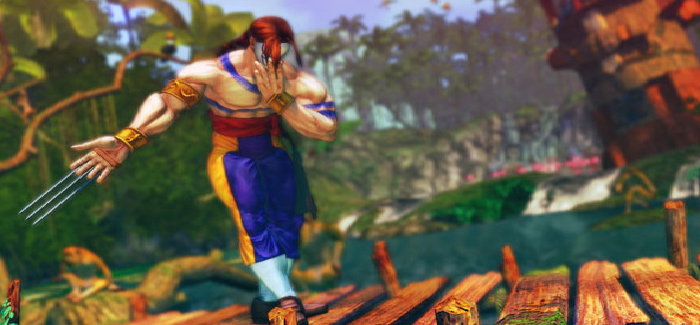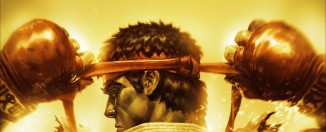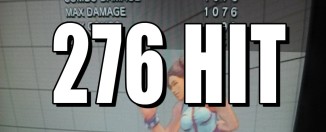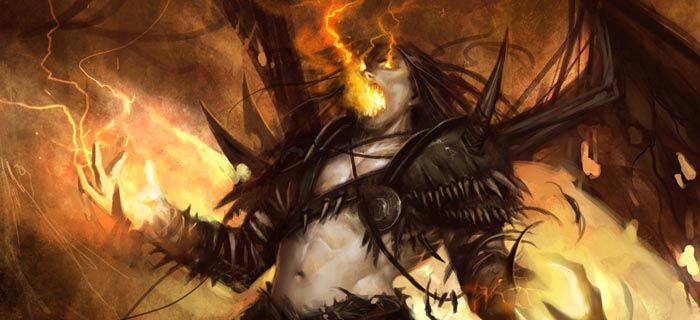Get Good: Frame traps, option selects, and more
Street Fighter IV AE features a lot of gameplay mechanics that are both hallmarks of the greater Street Fighter series and are new to the fourth iteration. Option selects have been around since Street Fighter 2, cancelling since Street Fighter 2, and some techniques like the parry have come and gone in certain iterations, or have evolved into different techniques like Street Fighter IV’s focus attack.
These mechanisms are constantly in flux in the Street Fighter metagame, gaining and losing prominence as the competitive scene evolves.
Unique technology
What really sets Street Fighter IV apart are frame traps – watching Evolution 2012’s Street Fighter IV Top 32 made this uniqueness clear. But why are they so special? Let’s explain some of the metagaming background first.
You see, unblockables – attacks that break through guard, such as grabs – don’t factor much into the game, and grabs that are featured in the game have a heavy recovery, enough so that evasive maneuvers can easily lead to a subsequent punish. For this reason, defense is superficially powerful – regular throws don’t have big range, big damage, and to reiterate, unblockables for the most part are heavily situational, so momentum from a throw isn’t world-changing. Add some characters’ slow walk speeds, floaty jumps, and lack of momentous special moves to the equation, and blocking is almost universally a good idea.
For the longest time though, throw tech option selects were the name of the game. What a throw tech option select – or, crouch tech -means is that if you are crouching and press the buttons used to tech a throw – jab, and short, simultaneously – you will be able to tech an opponent’s throw and also whiff a crouching light kick if they don’t do anything.
That’s what the term option select means – based on one input, or a quick series of inputs, two different things can happen depending on what your opponent does. In this case, the first option is that you whiff a crouch light kick.
Crouch teching is different from stand teching as if you stand and press the buttons to tech a throw, you’ll simply reach out and grab the air. Of course, this is the same as grabbing an opponent, but also techs throws that come your way as well. However, if your opponent is outside the range of your grab, you spend nearly half a second completely vulnerable, which is a lot more than the time spent whiffing most crouch techs.
For some characters like Ryu or Chun-Li, this means if you interrupt your opponent’s movement or offensive moves with a crouch light kick of your own, you can combo off of it. Other characters like Vega are less fortunate and have to find another way to turn interrupting their opponent’s momentum into a big damage situation.
Option serect?
However, we all know that Street Fighter is essentially rock, paper, scissors. Usually, blocking beats attacks, attacking beats throws, and throws beat blocking. If you can crouch tech efficiently enough, though, you can beat both attacks and throws in the same maneuver. Option select throw techs were abused for the longest time because of this – if an opponent didn’t have tight offense, then they’d just get crouching light kicked out of their momentum and have all of their throws teched.
Characters like Ryu had an easy way of taking advantage of this, however. Shoryuken is an invincible move, so any opponents’ moves that come out during its startup period are ignored, and the shoryuken then punishes that moves’ recovery. Ryu has an easy combo out of his uppercut that involves focus cancelling the shoryuken for two bars, dashing forward, and then performing an ultra – it’s a basic attack that became a buzzword for fighting game enthusiasts, thanks to Daigo Umehara’s penchant of Shoryuken-FADC-ultra-ing everything under the sun. It was called the Umeshoryu.
In essence, a shoryuken punishes both the attempt at teching and the alternative option select attack – it’s a move that allows the traditional rock-paper-scissors format of Street Fighter to stay intact. It’s also pretty easy, and only costs two bars, yielding some impressive damage. For the entirety of Vanilla SFIV, every top tier character could do this – Sagat, Ryu, Akuma, and Seth all had uppercuts that were invincible and led to further damage at little cost. All you needed was the two bars to make sure the Shoryuken was safe and you were good to go. Essentially, the lack of frame trap technology that warranted the use of so many Umeshoryus as a part of offense helped dictate the tier list.
UmeCloseRoundhouse
By the time Super had come out, the Umeshoryu became less powerful. Nearly every character that could take advantage of that tactic had its power lessened, and as a result different tactics were emphasized. The traditional rock-paper became the standard of offensive tactics and characters like Guile, Balrog, and Chun-Li benefited from these changes the most as they had the best combos that started out of normal strings, along with the best footspeed to make their offensive mixups more ambiguous.
To explain further, the idea behind crouch techs is that they are supposed to beat both throws and offensive moves. However, the characters that were the best in Super Street Fighter IV were characters with good walk speed and normals that, when used up close, lead to a lot of damage after they connected. Since these characters had good walk speed, they could make the timing of their throws and normal moves highly ambiguous, which made it hard to read their offense.
In addition to that, they had moves that had superior range, so they could easily move in and out of throw range and transition into long-range pokes from afar. As a result, these characters that held dominion over the once-powerful throw tech option select were seen as powerful, since they were so adapt at the close-range game.
Of course, each of these characters also excelled at a far distance, and the game became much more defensively based as a result. Regardless, the game began to change because of these characters’ offensive power. Instead of the Umeshoryu holding sway in the metagame, the new top tier characters were using a tactic that was dubbed as “frame traps”. The difference between the Umeshoryu and the frame trap is that the Umeshoryu was invincible, so as long as you got the move to come out when you were on offense, it didn’t matter when your opponent did their move, because it would always lose to your Umeshoryu.
An education in entrapment
Frame traps are different, because the moves you are using to beat crouch techs don’t have any invincibility at all. As a result of this, traditional Street Fighter mechanics apply – you need to time your moves such that they either hit the option select throw tech before the whiffed move comes out, during the window in which the move comes out, but from a distance wherein your move will not trade with theirs, or, after the active frames (the frames that hit you) of their move run out. An Umeshoryu can hit the active frames of a move with ease because during an Umeshoryu the character is completely invincible, and the throw tech option select will always be trumped.
The reason the move is called a “frame trap” is because every normal in the game consists of several frames that constitute the time it takes for them to begin hitting, the window during which they are hitting, and the time it takes for that move to recover. Your “trap” is designed to hit your opponent during the time these moves are out, as they are incapable of blocking once they commit to pressing a button.
However, an added facet of the option select throw tech is that as long as you press jab and short while you are holding down and back, not only will you tech throws and interrupt moves, but you will also block moves so long as you don’t press your button before they do. As a result, some crouch techs are intentionally delayed to block frame traps – as a result, the frame trapper needs to tailor his offense to “fish” for these delayed moves.
Frame trapping in motion
For example, look at Vega. Vega’s offense consists primarily of frame traps because of his fast walk speed and good normal combo potential. If Vega is close to an enemy, let’s say he pokes them with a c. jab, just to “initiate” a mixup, because he now has a small amount of frame advantage. The c. jab pushes him out by just a tiny bit, but enough that he can still get his close moves to come out, and that’s important because they are the moves with the biggest combo potential upon hit.
From here, Vega has a couple options – throw, continue jabbing, walk back poke, or frame trap. Let’s say that the Vega player knows his opponent is going to crouch tech. If Vega threw, his opponent would tech the throw, and if he continued jabbing, his opponent would probably block the jabs because he is delaying his throw tech. Walk back poke could work, but it might take too long to walk back to a distance that spaces a poke well, and your opponent could already whiff an entire crouch tech during that period, and if you’re walking back, it could potentially hit you low.
The go-to option here is a frame trap, so Vega uses cl. fierce. Since the opponent delays hiscrouch tech, and Vega’s close fierce is slow enough that the opponent actually has time to get their move out, Vega will most likely hit the move as it’s coming out and blow the opponent up for severe damage.
Tons of moves like that exist in the game – nearly every charge character has a close move that is designed simply to fish for these moves and finish with a heavy damage combo. As a result, frame traps are definitely very strong, but take a little bit of conviction to use as it’s tough to convince yourself that doing a move you know is slow will work.
Future developments
Now crouch teching is a liability, and most players will opt to simply stand and tech throws, which actually increases the throw tech window substantially. It also comes out in three frames, which is very fast, and can interrupt some characters’ offense as your crouch techs would normally. Like crouch techs of course, standing techs are still vulnerable to other mixups, but they will actually beat some frame traps, and since this is the common tactic of high level play now, the metagame will evolve such that standing tech isn’t as powerful a tactic. Or, conversely, that could be the most viable defensive tactic, and the offensive metagame will simply evolve to a greater point of finesse.
Regardless though, I hope this article helped improve your understanding of frame traps, why they work, and how the game evolved to the point that they are a necessary part of most characters’ offense. Remember to look at your frame data for different moves that can yield advantages on both hit and counter hit, and tailor your offense to make them a focal point that overpowers other players’ defense.
Happy Street Fighting!








Enjoyed the read, hope all this knowledge will help me improve my game. I know know what I need to master.
Great explanation of the ever evolving counter-counter-counter game. It’s great that such a polished engine has been able to continuously grow and evolve for the better part of twenty years, and continues to do so.